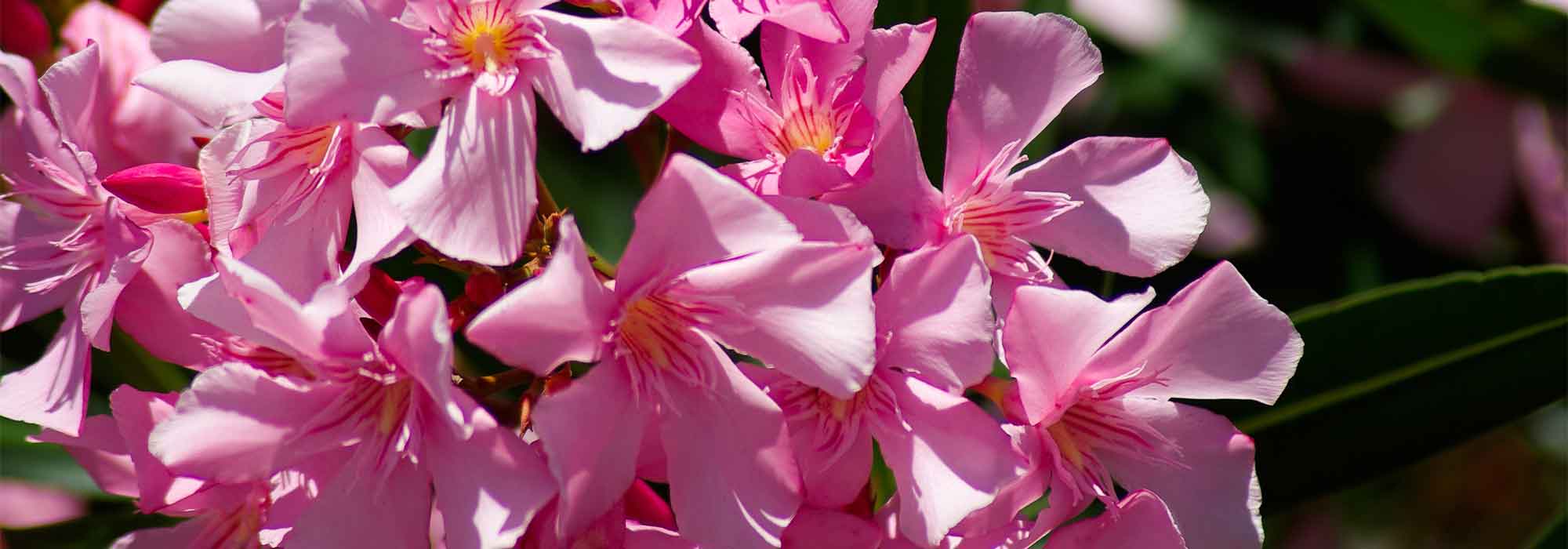
When and how to take oleander cuttings?
Our tips for successful propagation by cuttings
Contents
Oleander, also called flowering laurel, is a very attractive Mediterranean bush, valued for its pretty flowering.
Taking a cutting of oleander is a very easy operation that lets you multiply your favourite bushes easily.
Discover when and how to propagate oleander very easily thanks to our illustrated tips.
When to propagate oleander?
August is best time to propagate oleander. Indeed, end of summer also marks end of bush growth, favouring propagation of oleander by cuttings. It is also a favourable time for successful establishment of plant in soil.
Bear in mind, however, that propagation of oleander by cuttings can be considered from March through to October, provided conditions are suitable.
- Between March and April, take advantage of pruning your oleander to collect stems for cuttings.
- Between May and June, select young herbaceous stems (green, flexible stems) for your oleander cuttings.
- In August, use a semi-woody or semi-ripened* stem for your oleander cutting.
- From September to October, prune your oleander to remove faded flowers. This is again a good opportunity to take oleander cuttings.
*Stems that grew in spring and begin their transformation from soft wood to hard wood from July–August.
How to take oleander cuttings?
In water or in soil, two different techniques can be used to propagate an oleander by cuttings. Each method gives good results and has its own advantages.
Propagation of oleander cuttings in water allows observation of root development. It is also the method most recommended for beginner gardeners, as it is very easy and quick to carry out.
By contrast, propagation by cuttings of oleander in soil allows simpler repotting, without risk of damaging the brittle, fragile root system.
How to take oleander cuttings?
- to avoid transmitting diseases from one plant to another, disinfect your pruning shear with 90% alcohol.
- Choose healthy stem tips that are well formed, free from signs of disease or insect attack, and that have not flowered.
- Using pruning shear, cut stems on the slant to about 20 cm.
- Remove leaves along the stem, keeping only 3 to 6 leaves at the top of the oleander cutting.
- Reduce terminal leaves to ¾ of their length to limit evaporation.
- Slash base of the shoot vertically for up to 1 cm to increase root-forming surface.
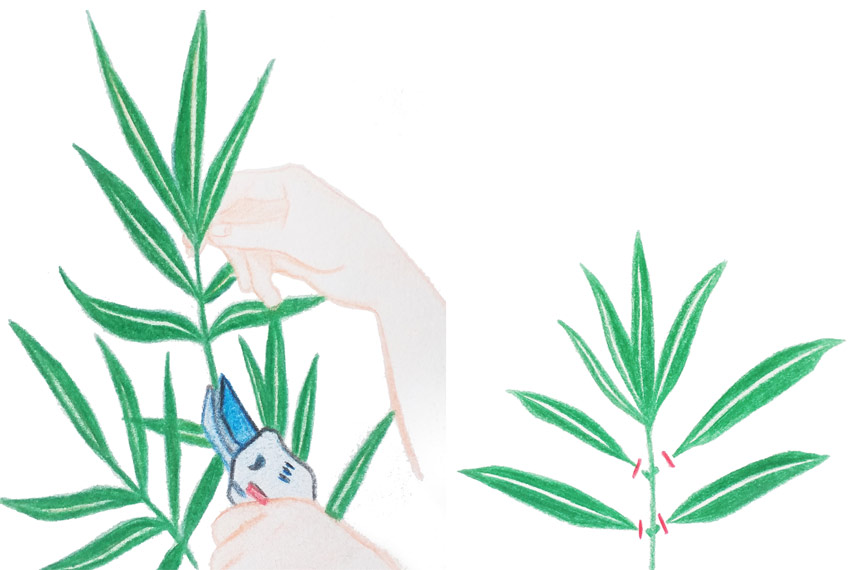
How to propagate an oleander in water?
Materials needed to propagate oleander in water:
- a glass;
- mesh or clingfilm;
- charcoal;
- cutting compost;
- or a mix of compost, sand and peat*.
To make oleander cuttings in water, proceed as follows:
- fill a glass or jar with water, preferably non-calcareous, and add a small piece of charcoal. This prevents water from going stagnant.
- Place coarse-mesh grid over glass. If none available, use clingfilm pierced with one or more holes.
- Insert oleander stems so that their bases are immersed about 4 to 5 cm.
- Keep cuttings in a shaded spot.
- Because of natural evaporation, check water level in cutting regularly.
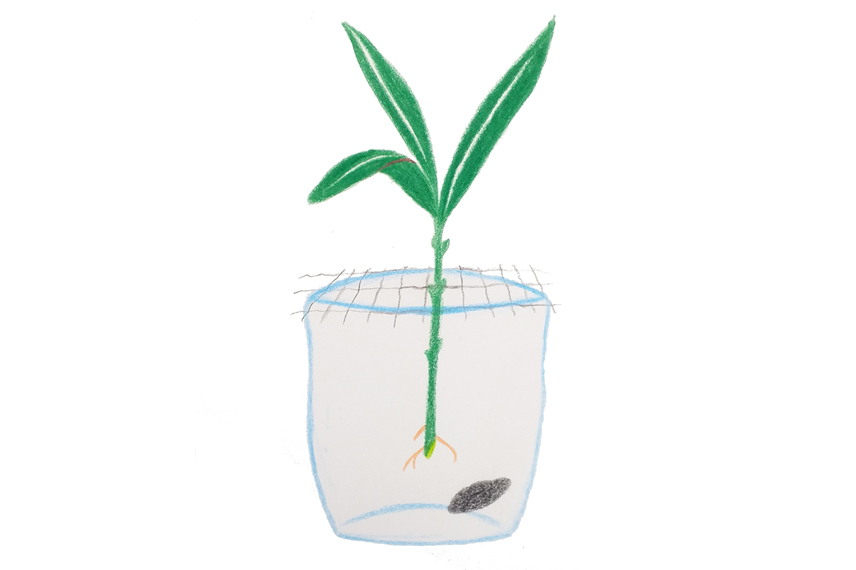
After two to four weeks, first roots of the oleander cutting appear, but development must be maintained for at least 2 months.
After this period, new plant can be repotted:
- fill a pot with cutting compost or with a light mix of compost (3/5), sand (1/5) and peat (1/5).
- Plant your oleander cutting. Handle plant with care to avoid damaging fragile roots. Even slight shock can cause breakage.
How to propagate an oleander in soil?
For oleander cuttings in soil, prepare:
- a 5 to 7.5 cm diameter pot;
- a plastic bag, a cloche or the bottom of a plastic bottle;
- compost;
- sand.
If you choose to take oleander cuttings directly in soil, follow these steps:
- prepare pot by filling with a mix of compost and sand.
- Make a hole in substrate using a piece of wood.
- Insert cutting into hole, firm soil around stem and water.
- Cover pot with a plastic bag, cloche or bottle bottom to create warm, humid, hothouse conditions.
- Place oleander cuttings in shade and warmth. Avoid direct sun that burns leaves.
- Air regularly the cutting to prevent development of fungal diseases.
- Keep substrate constantly moist but not waterlogged.
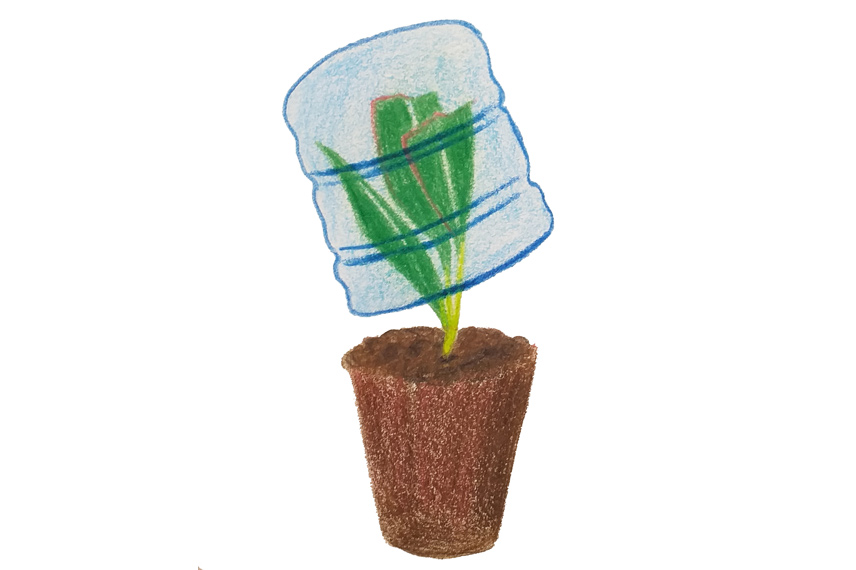
Signs of growth and rooting usually appear after a few weeks. However, let cuttings pass winter and wait until early spring before repotting or planting cutting outdoors.
→ To learn more, also watch our video on semi-ripe cuttings in soil:
Discover other Nerium - Oleander
View all →Available in 0 sizes
Available in 1 sizes
Available in 1 sizes
Available in 3 sizes
Available in 1 sizes
Available in 4 sizes
Available in 1 sizes
Available in 1 sizes
Available in 2 sizes
Available in 1 sizes
After propagation of oleanders by cuttings: planting the cuttings
Oleander plants obtained by propagation by cuttings can be planted in the garden once all risk of frost has passed.
Again, two options are available to you. You can plant your young oleander cutting in a large pot placed outdoors, or plant it directly in the ground in the garden.
- Mix garden soil with planting compost or potting compost for flowering plants, to provide enough nutrients for your plant as it develops.
- Water regularly, taking care never to drown oleander roots, which are very sensitive to excess moisture.
- Subscribe!
- Contents

































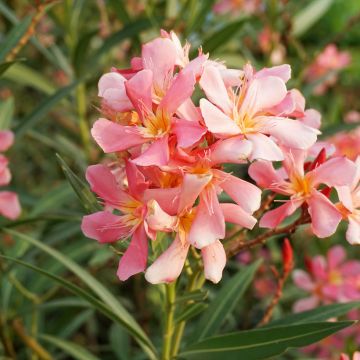

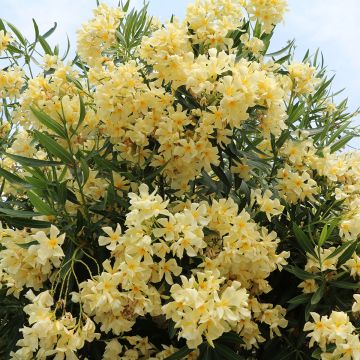
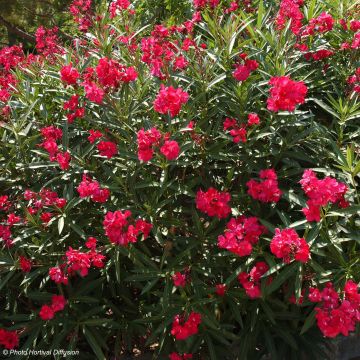

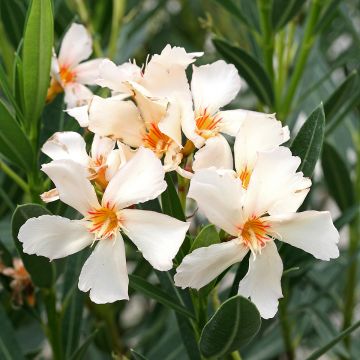

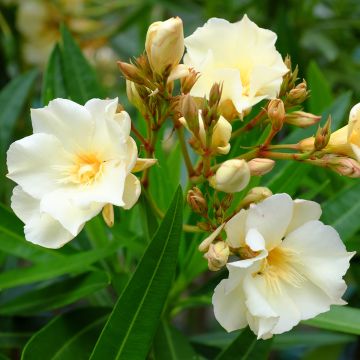
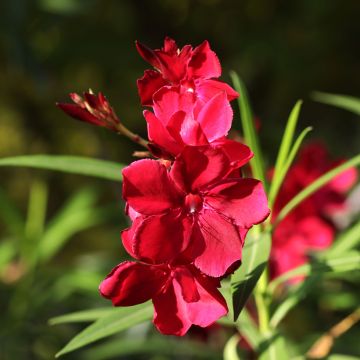
Comments